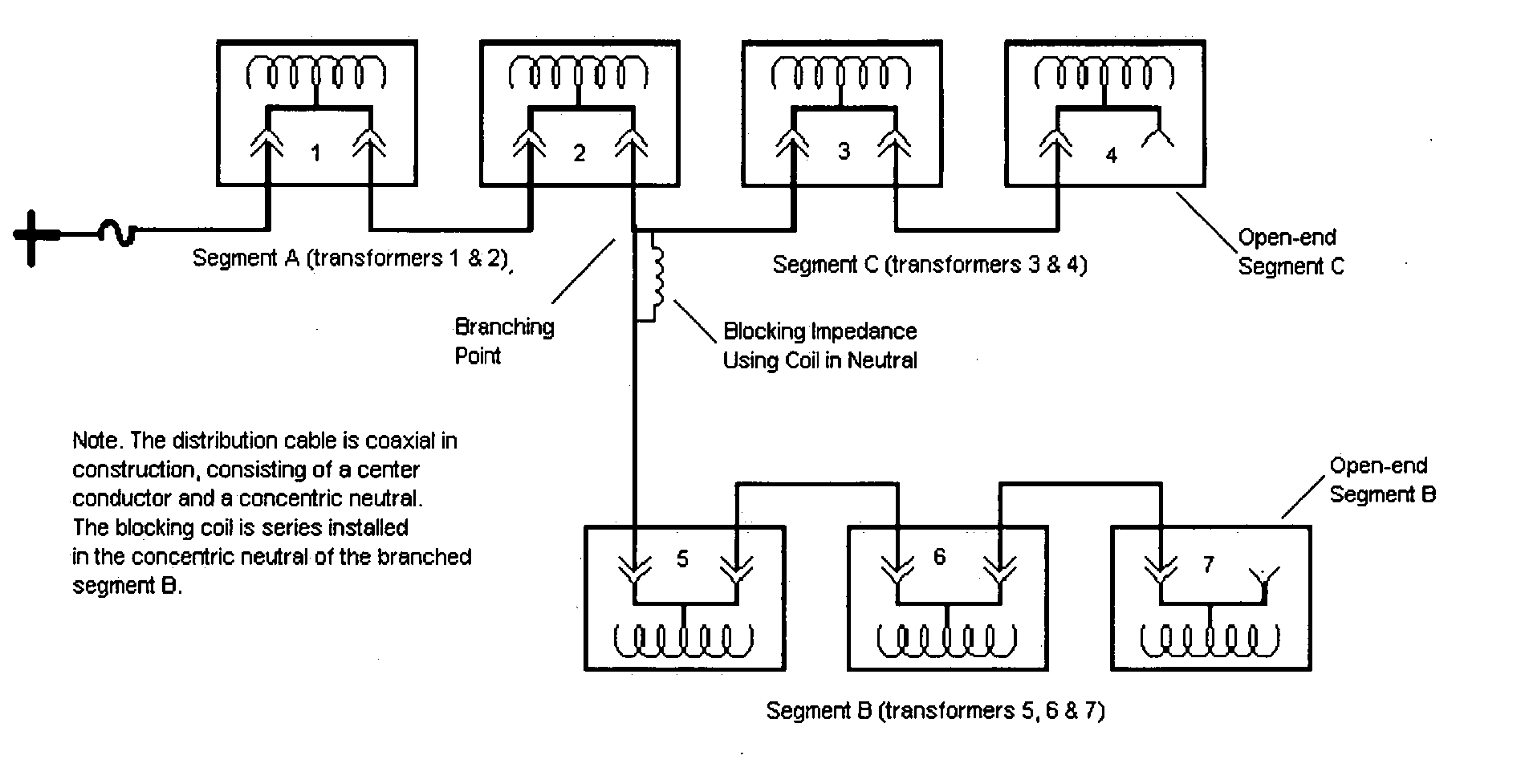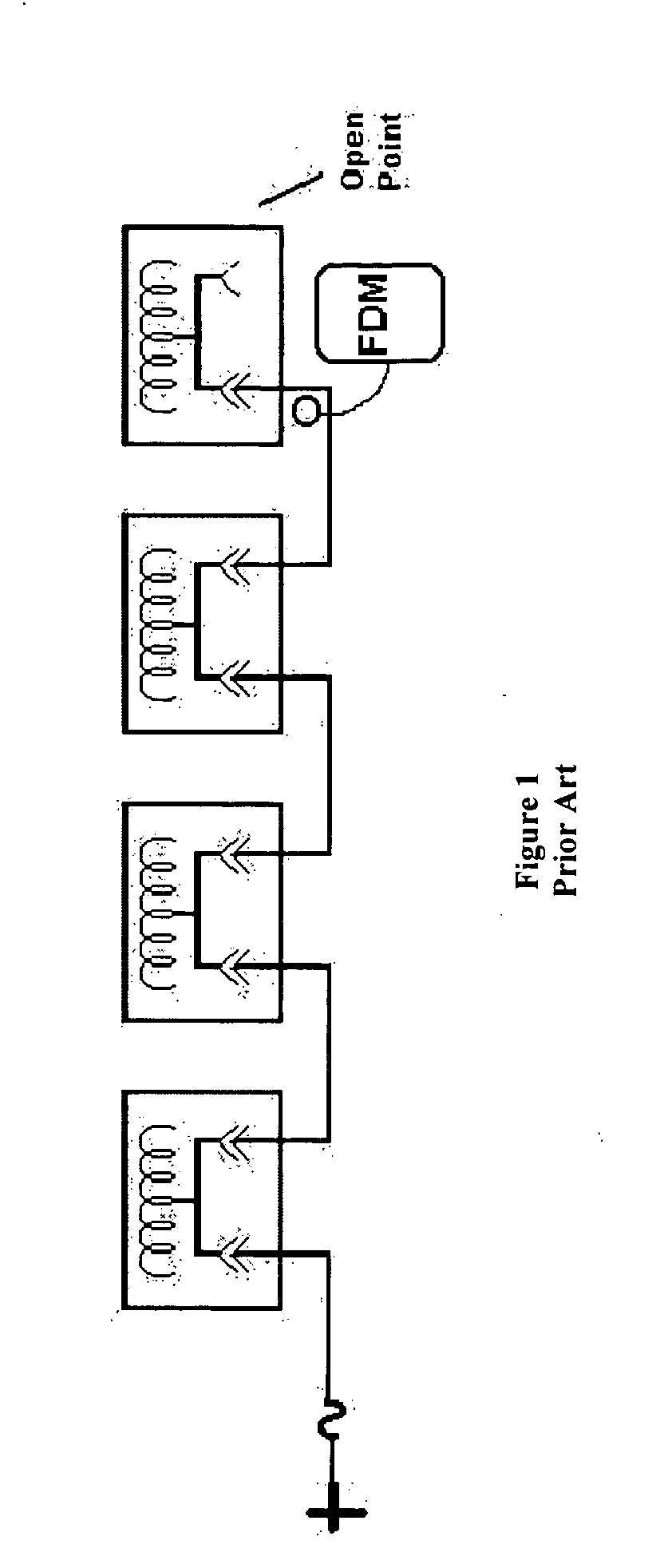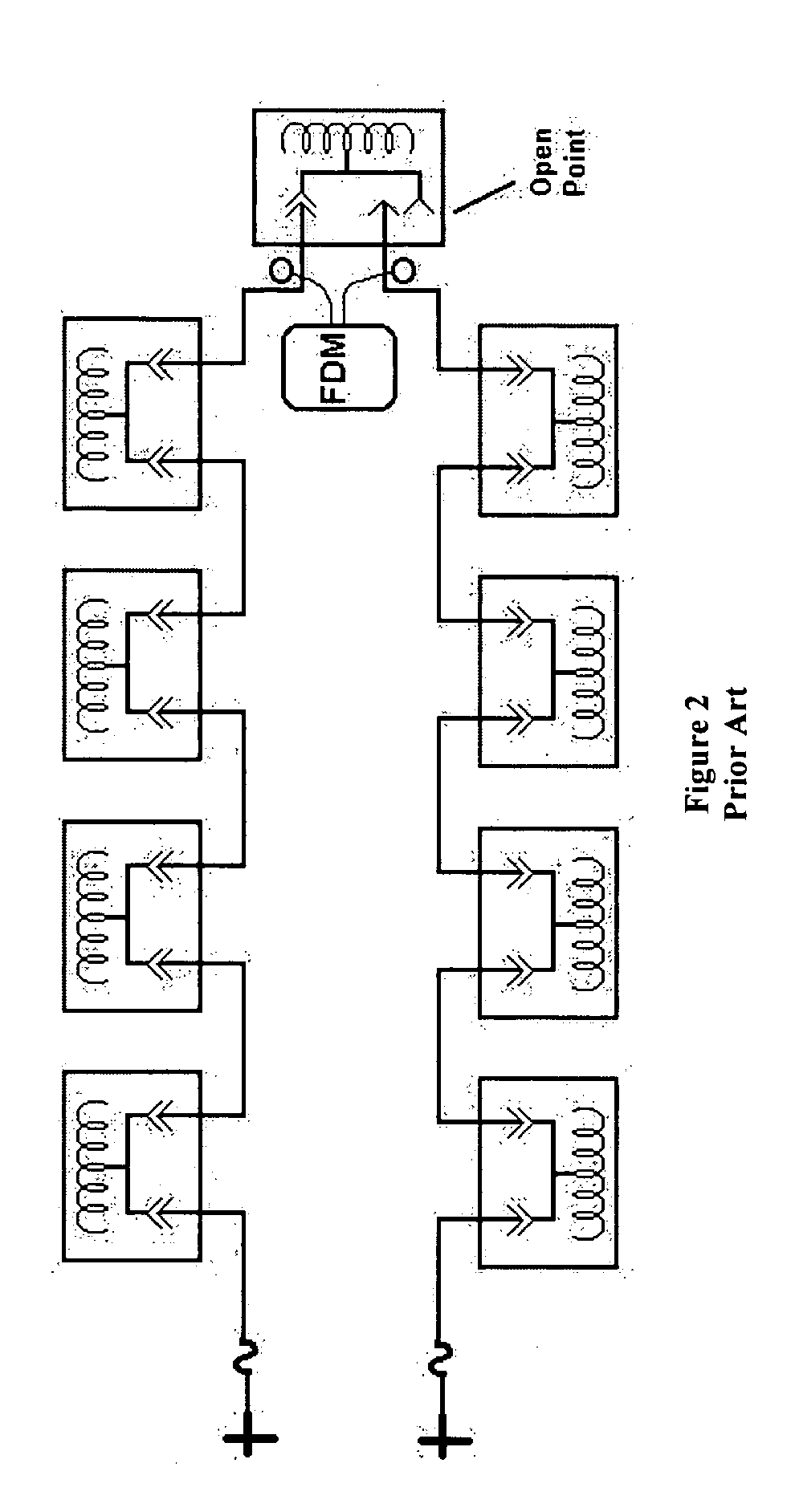Blocking impedance
a technology of impedance and block, applied in the direction of electric variable regulation, process and machine control, instruments, etc., can solve the problem of limiting the usefulness of fault recorders and estimators for branched circuits, and achieve the effect of cost-effective utilization of fault recorders
- Summary
- Abstract
- Description
- Claims
- Application Information
AI Technical Summary
Benefits of technology
Problems solved by technology
Method used
Image
Examples
Embodiment Construction
[0020] If the circuits of FIG. 1 and 2 are fed from underground rather than overhead, there is no reflection point for the traveling waves at the fuse or feed point. Significant impedance however can be readily introduced into the circuit at the feed point to create a point of reflection for the traveling waves. This impedance can be created using components such as a resistor, inductor or ferrite. The impedance should be sufficient to cause a majority of the traveling wave to reflect back toward the fault location.
[0021] The blocking impedance can be achieved using a resistor, inductor, ferrite or similar passive device in the neutral line at the desired location. A resistor is not a practical solution in terms of size and cost, when designed for a power distribution system. An inductor could be used, but would need to be designed to handle normal circuit conditions as well as fault conditions. Under fault conditions the inductor would be subjected to currents many times higher th...
PUM
 Login to View More
Login to View More Abstract
Description
Claims
Application Information
 Login to View More
Login to View More - R&D
- Intellectual Property
- Life Sciences
- Materials
- Tech Scout
- Unparalleled Data Quality
- Higher Quality Content
- 60% Fewer Hallucinations
Browse by: Latest US Patents, China's latest patents, Technical Efficacy Thesaurus, Application Domain, Technology Topic, Popular Technical Reports.
© 2025 PatSnap. All rights reserved.Legal|Privacy policy|Modern Slavery Act Transparency Statement|Sitemap|About US| Contact US: help@patsnap.com



